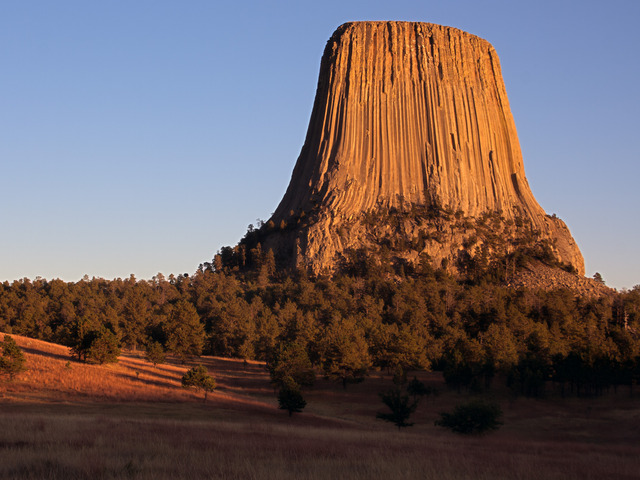Explore Devils Tower National Monument: A Complete Guide for Adventure Seekers

Located in northeastern Wyoming, Devils Tower National Monument is a striking geological formation with a fascinating history, diverse trail options, and scenic camping spots. Here’s everything you need to know before planning your trip.
A Brief History
Designated as the first U.S. National Monument in 1906 by President Theodore Roosevelt, Devils Tower has long been a sacred site for Native American tribes, including the Lakota, Cheyenne, and Crow. Its unique columnar structure was formed by the cooling and cracking of volcanic magma millions of years ago, creating a mesmerizing natural landmark that rises 867 feet above the surrounding terrain.
The monument is steeped in Native American mythology. Many tribes have stories about the Tower, often involving its creation by supernatural forces to protect people from harm.
Parking and Camping
- Parking: Ample parking is available near the visitor center, though it can fill up quickly during peak season (April to October). Additional parking is available at trailheads, including the less crowded Joyner Ridge area.
- Camping: The Belle Fourche River Campground within the monument offers basic amenities, including restrooms, picnic tables, and fire pits. It’s an ideal spot for those who want to wake up to views of Devils Tower. Reservations are recommended during busy months.
Entrance Fees
- Private Vehicle: $25
- Motorcycle: $20
- Per Person (walk-in or bicycle): $15
- Annual Park Pass: $45
Alternatively, the America the Beautiful National Parks Pass covers entry to Devils Tower and other national parks for $80 annually.
Top Trails at Devils Tower National Monument
-according to Alltrails.com
1. Devils Tower Trail
- Distance: 1.7-mile loop
- Difficulty: Easy
- Average Completion Time: 39 minutes
This family-friendly trail offers a close-up view of the Tower’s base. Perfect for birding, hiking, and running, it’s one of the most popular routes. Expect to see plenty of fellow hikers. The trail is paved and shaded in parts, making it accessible for all ages. Note: Dogs are not allowed.
2. Red Beds Trail
- Distance: 2.8-mile loop
- Difficulty: Moderate
Offering panoramic views of Devils Tower and the surrounding Black Hills, this trail meanders through grasslands and forested areas. It’s a favorite for those seeking a quieter hike with diverse scenery. Bring plenty of water and sun protection, as some sections lack shade.
3. South Side, Red Beds, and Tower Trail Loop
- Distance: 3.8 miles
- Difficulty: Moderate
Starting near the campground, this loop combines three trails for a varied experience. The initial ascent past Prairie Dog Town is steep but rewards hikers with breathtaking views from the visitor center. From there, the loop follows the paved Tower Trail and the scenic Red Beds Trail.
4. Joyner Ridge, Red Beds, and Devils Tower Trail
- Distance: 7.0 miles
- Difficulty: Moderate to Challenging
This extended loop showcases the park’s diverse landscapes, from prairie grasslands to ponderosa pine forests. It’s ideal for those wanting a longer, immersive hike. Along the way, you’ll encounter quiet vistas and interpretive signs that highlight the natural and cultural significance of the monument.
5. Joyner Ridge Trail
- Distance: 1.5-mile loop
- Difficulty: Moderate
One of the quieter trails, Joyner Ridge is perfect for those seeking solitude and stunning views of Devils Tower. Situated north of the Tower, it’s also a prime spot for stargazing and astrophotography. The small parking area at the trailhead provides excellent daytime views and nighttime celestial displays.
Plan Your Visit
The best time to visit Devils Tower is April through October, when the weather is pleasant, and all trails are open. Whether you’re hiking, camping, or simply soaking in the views, Devils Tower promises a memorable outdoor experience.
